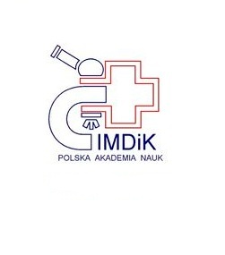- Search in all Repository
- Literature and maps
- Archeology
- Mills database
- Natural sciences
Advanced search
Advanced search
Advanced search
Advanced search
Advanced search

Object
Title: Localization of endothelin in the blood-brain interphase in rat hippocampus after global cerebral ischemia
Creator:
Gajkowska, Barbara ; Mossakowski, Mirosław Jan (1929–2001)
Date issued/created:
Resource type:
Subtitle:
Publisher:
Place of publishing:
Type of object:
Abstract:
Przeprowadzono immunocytochemiczną ocenę rozmieszczenia endoteliny w sektorze CA1 hipokampa szczurów po 10 min całkowitym niedokrwieniu mózgu. Badania wykonano po upływie 10 min, 3, 6, 12 i 24 godz po niedokrwieniu przy użyciu dostosowanej do mikroskopu elektronowego techniki immunocytochemicznej, wykorzystującej złoto koloidalne. Immunoreaktywność dla endoteliny wykazano nie tylko w komórkach śródbłonka naczyniowego, lecz również w astrocytach, mikrogleju, makrofagach i w niektórych zakończeniach aksonalnych. Największą intensywność zmian wykazano po upływie 24 godz po niedokrwieniu. W okresie tym immunoreaktywność występowała we wszystkich elementach złącza naczyniowo-tkankowego: śródbłonkach, błonach podstawnych naczyń i w okołonaczyniowych astrocytach. Szczególnie intensywny odczyn występował w makrofagach gromadzących się w sąsiedztwie naczyń.Wydaje się, że zależne od niedokrwienia zwiększenie zawartości endoteliny może wskazywać na jej ewentualny udział w patogenezie poischemicznych uszkodzeń mózgu.
References:
Electron microscopic immunocytochemical evaluation of localization and distribution of endothelins 1, 2 and 3 in the CAI hippocampal sector in rats submitted to 10 min global cerebral ischemia was performed. The studies were done in different postischemic periods (10 min, 3, 6, 12 and 24 h) with postembedding immuno-gold technique for electron microscopy. Endothelin-like immunoreactivity was found in endothelial cells of hippocampal microvessels and in astrocytes, microglia, macrophages and in some axonal endings. The most pronounced changes appeared 24 h after ischemia. At that period all structural elements of blood-brain interphase: endothelium, basal membrane and perivascular astrocytic processes showed intensive endothelin-like immunoreactivity. Especially marked immunoreactivity was found in macrophages appearing in the proximity of microvessels. It has been stressed that ischemia-induced increased content of endothelin may play an important role in the pathogenesis of postischemic tissue abnormalities.
Relation:
Volume:
Issue:
Start page:
End page:
Detailed Resource Type:
Format:
Resource Identifier:
Language:
Language of abstract:
Rights:
Creative Commons Attribution BY 4.0 license
Terms of use:
Copyright-protected material. [CC BY 4.0] May be used within the scope specified in Creative Commons Attribution BY 4.0 license, full text available at: ; -
Digitizing institution:
Mossakowski Medical Research Institute PAS
Original in:
Library of the Mossakowski Medical Research Institute PAS
Projects co-financed by:
Access:
Object collections:
- Digital Repository of Scientific Institutes > Partners' collections > Mossakowski Medical Research Institute PAS > Publications of the Institute employees
- Digital Repository of Scientific Institutes > Literature > Journals/Articles
Last modified:
Feb 1, 2022
In our library since:
May 30, 2019
Number of object content downloads / hits:
87
All available object's versions:
https://rcin.org.pl./publication/94243
Show description in RDF format:
Show description in RDFa format:
Show description in OAI-PMH format:
Objects Similar
Mossakowski, Mirosław Jan (1929–2001)
Pluta, Ryszard Kida, Elżbieta Lossinsky, AS. Wiśniewski, HM. Mossakowski, Mirosław Jan (1929–2001)
Mossakowski, Mirosław Jan (1929–2001) Gajkowska, Barbara
Gajkowska, Barbara Mossakowski, Mirosław Jan (1929–2001)
Gajkowska, Barbara Mossakowski, Mirosław Jan (1929–2001)
Gajkowska, Barbara Mossakowski, Mirosław Jan (1929–2001)
Gajkowska, Barbara Mossakowski, Mirosław Jan (1929–2001)
Mossakowski, Mirosław Jan (1929–2001) Gajkowska, Barbara

 INSTYTUT ARCHEOLOGII I ETNOLOGII POLSKIEJ AKADEMII NAUK
INSTYTUT ARCHEOLOGII I ETNOLOGII POLSKIEJ AKADEMII NAUK
 INSTYTUT BADAŃ LITERACKICH POLSKIEJ AKADEMII NAUK
INSTYTUT BADAŃ LITERACKICH POLSKIEJ AKADEMII NAUK
 INSTYTUT BADAWCZY LEŚNICTWA
INSTYTUT BADAWCZY LEŚNICTWA
 INSTYTUT BIOLOGII DOŚWIADCZALNEJ IM. MARCELEGO NENCKIEGO POLSKIEJ AKADEMII NAUK
INSTYTUT BIOLOGII DOŚWIADCZALNEJ IM. MARCELEGO NENCKIEGO POLSKIEJ AKADEMII NAUK
 INSTYTUT BIOLOGII SSAKÓW POLSKIEJ AKADEMII NAUK
INSTYTUT BIOLOGII SSAKÓW POLSKIEJ AKADEMII NAUK
 INSTYTUT CHEMII FIZYCZNEJ PAN
INSTYTUT CHEMII FIZYCZNEJ PAN
 INSTYTUT CHEMII ORGANICZNEJ PAN
INSTYTUT CHEMII ORGANICZNEJ PAN
 INSTYTUT FILOZOFII I SOCJOLOGII PAN
INSTYTUT FILOZOFII I SOCJOLOGII PAN
 INSTYTUT GEOGRAFII I PRZESTRZENNEGO ZAGOSPODAROWANIA PAN
INSTYTUT GEOGRAFII I PRZESTRZENNEGO ZAGOSPODAROWANIA PAN
 INSTYTUT HISTORII im. TADEUSZA MANTEUFFLA POLSKIEJ AKADEMII NAUK
INSTYTUT HISTORII im. TADEUSZA MANTEUFFLA POLSKIEJ AKADEMII NAUK
 INSTYTUT JĘZYKA POLSKIEGO POLSKIEJ AKADEMII NAUK
INSTYTUT JĘZYKA POLSKIEGO POLSKIEJ AKADEMII NAUK
 INSTYTUT MATEMATYCZNY PAN
INSTYTUT MATEMATYCZNY PAN
 INSTYTUT MEDYCYNY DOŚWIADCZALNEJ I KLINICZNEJ IM.MIROSŁAWA MOSSAKOWSKIEGO POLSKIEJ AKADEMII NAUK
INSTYTUT MEDYCYNY DOŚWIADCZALNEJ I KLINICZNEJ IM.MIROSŁAWA MOSSAKOWSKIEGO POLSKIEJ AKADEMII NAUK
 INSTYTUT PODSTAWOWYCH PROBLEMÓW TECHNIKI PAN
INSTYTUT PODSTAWOWYCH PROBLEMÓW TECHNIKI PAN
 INSTYTUT SLAWISTYKI PAN
INSTYTUT SLAWISTYKI PAN
 SIEĆ BADAWCZA ŁUKASIEWICZ - INSTYTUT TECHNOLOGII MATERIAŁÓW ELEKTRONICZNYCH
SIEĆ BADAWCZA ŁUKASIEWICZ - INSTYTUT TECHNOLOGII MATERIAŁÓW ELEKTRONICZNYCH
 MUZEUM I INSTYTUT ZOOLOGII POLSKIEJ AKADEMII NAUK
MUZEUM I INSTYTUT ZOOLOGII POLSKIEJ AKADEMII NAUK
 INSTYTUT BADAŃ SYSTEMOWYCH PAN
INSTYTUT BADAŃ SYSTEMOWYCH PAN
 INSTYTUT BOTANIKI IM. WŁADYSŁAWA SZAFERA POLSKIEJ AKADEMII NAUK
INSTYTUT BOTANIKI IM. WŁADYSŁAWA SZAFERA POLSKIEJ AKADEMII NAUK


































